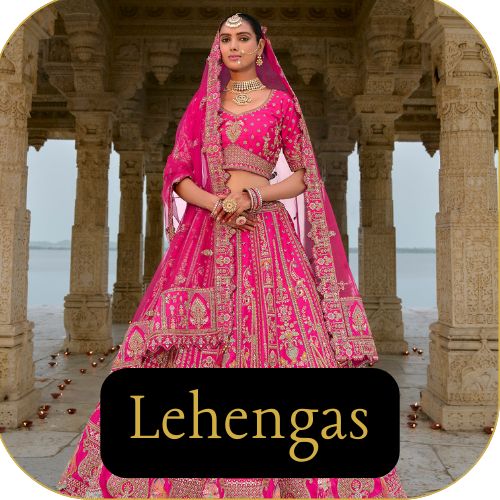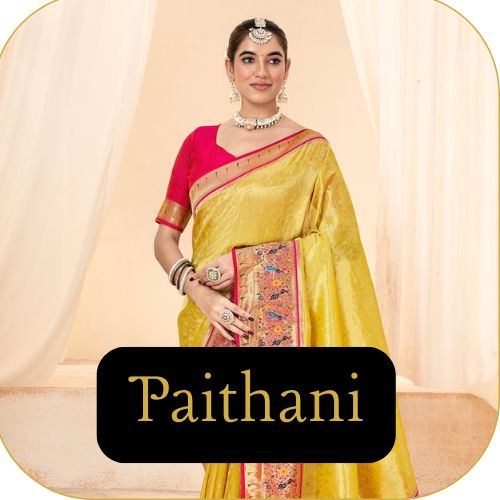The saree, a timeless piece of clothing, is renowned for its elegance and versatility. One of the most fascinating aspects of the saree is the numerous ways it can be draped, each style reflecting a unique cultural heritage and personal taste. From the classic Nivi drape to the more regional Bengali and Gujarati styles, mastering these draping techniques can add a touch of tradition and modernity to your wardrobe. In this blog, we’ll explore some popular saree draping styles with step-by-step tutorials.
The Classic Nivi Style
Originating from Andhra Pradesh, the Nivi drape is the most common and widely recognized style of wearing a saree.

Steps:
- Start with the Petticoat: Tie a petticoat around your waist, making sure it's secure and snug.
- Tuck the Saree: Starting from the right, tuck the plain end of the saree into the petticoat. Make a full circle around your waist.
- Make Pleats: Take the loose end of the saree and start making pleats (about 5-7 pleats, each about 5 inches wide). Tuck the pleats into the petticoat slightly to the left of your navel.
- Drape the Pallu: Take the remaining portion of the saree and drape it over your left shoulder, letting the pallu (the decorative end) fall behind you. You can either pin it to your blouse or let it hang loose.
The Bengali Style
The Bengali drape is known for its elegant and flowing appearance, often associated with festivals and traditional events in West Bengal.

Steps:
- Tuck the Saree: Start by tucking the saree at the right side of your waist and wrap it around your waist once.
- Pleat the Pallu: Bring the pallu around and drape it over your left shoulder, ensuring it’s long enough to reach your ankles.
- Create the Pleats: Make wide pleats with the remaining fabric in the front and tuck them into the petticoat.
- Drape Again: Bring the pallu under your right arm and drape it over your left shoulder again, forming a V-shape at the front. Secure it with a pin if needed.
The Gujarati Style
The Gujarati drape, also known as the Seedha Pallu style, is characterized by the pallu being draped over the right shoulder instead of the left.

Steps:
- Tuck the Saree: Start from the right and tuck the plain end into the petticoat, wrapping it around your waist.
- Make Pleats: Create pleats with the loose end and tuck them into the petticoat at the center, slightly to the left.
- Drape the Pallu: Bring the remaining saree from the back to the front and drape it over your right shoulder, allowing the pallu to fall in front. Secure it with a pin.
- Finish the Look: Adjust the pleats at the front, spreading them evenly for a neat appearance.
The Maharashtrian Style
The Maharashtrian drape, also known as the Nauvari saree, involves a unique draping style that resembles dhoti pants.

Steps:
- Tuck the Saree: Start by tucking the saree at the center of your waist, ensuring both ends are equal in length.
- Wrap Around: Take the saree around your waist, bringing both ends to the front.
- Create the Dhoti Look: Take the left end of the saree and pass it between your legs, tucking it at the back. Repeat with the right end, securing it at the back.
- Drape the Pallu: Bring the remaining fabric over your left shoulder, allowing the pallu to hang behind. Secure it with a pin if necessary.
The Kerala Style
The Kerala saree drape, also known as the Mundum Neriyathum, is a traditional style from Kerala, often featuring white or off-white sarees with golden borders.
Steps:
- Drape the Mundu: Take the plain end of the saree and tuck it into the petticoat at the right side. Wrap it around your waist and tuck it in again.
- Create Pleats: Make pleats with the remaining fabric and tuck them into the petticoat at the center.
- Drape the Neriyathu: Take the decorative end of the saree and drape it over your left shoulder, allowing it to fall in front. You can pin it to your blouse for a secure fit.
The Modern Style
For those who prefer a contemporary twist, the modern saree drape incorporates elements of traditional draping with modern styling.

Steps:
- Start with the Petticoat: Wear a well-fitted petticoat or leggings and a stylish blouse.
- Wrap and Tuck: Tuck the plain end of the saree into the petticoat, wrapping it around your waist.
- Make Pleats: Create pleats with the loose end and tuck them in at the front, slightly to the left.
- Drape the Pallu: Instead of draping the pallu traditionally, you can drape it around your neck like a scarf, or create a unique style by pleating it and pinning it across your torso for a chic look.
Conclusion
Saree draping is an art that showcases the rich cultural diversity and heritage of India. Each draping style tells a story and adds a unique charm to the saree. Whether you prefer the classic Nivi drape or the traditional Bengali style, mastering these techniques can elevate your saree game for any occasion. Experiment with different styles, and don’t be afraid to add your personal touch to make each drape your own.
















